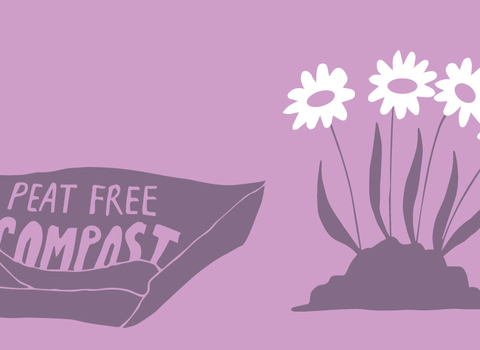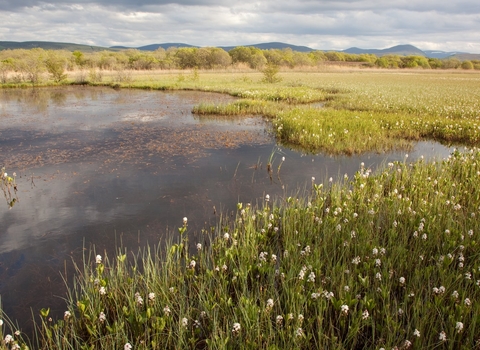Let's end peat use in horticulture.
For centuries it was believed that peatlands were of no value unless drained or extracted from. Today, we know this is not true – so why are 80% of the UK’s peatlands still degraded?
Peat extraction for gardening and growing directly contributes to the decline of our peatlands, with knock-on impacts for the interlinked nature and climate crises.
Progress on this issue is long overdue; targets to phase out peat use were first introduced in 2011. After little progress, a decade later, UK Government announced it would ban the sale of bagged peat compost, however, there is currently no legislation in place to achieve this. proposals to phase out peat compost sales by 2025 have been dropped completely and no date has yet been set to ban peat-related gardening products.
There must be increased ambition to bring about an end to peat use in both the UK's amateur and professional horticulture sector. Major retailers have demonstrated that it is possible, having successfully produced bedding plants not grown in peat on a commercial scale. Research has also shown that even carnivorous house plants, that originate from peat bogs can be grown without the need for peat.
The Wildlife Trusts have been at the forefront of the fight to protect peatlands since the 1990s and are leading on peatland restoration projects across the UK. To date, Wildlife Trusts have restored over 120,000 football pitches worth of peatlands in England alone.
Do you know?
Many people are now aware that switching to peat-free composts is an easy way to protect peatlands. However, did you know that peat can also be found lurking in other places? This includes:
Potted house plants
Trays of bedding plants
And some of the food we eat!
Anyone who loves wildlife will not want to unknowingly buy products containing hidden peat. Use our free resources to learn more, and spread the word.
What can you do?
Help us to raise awareness of 'hidden peat' and let others know how to avoid it.
1. Download our social media graphics for examples of where hidden peat can be lurking and some of the consequences of using peat.
2. Share these images on your social media channels with the hashtag #HiddenPeat or with friends and family by email. Everyone needs to know where hidden peat is!
3. Be the first to hear about the exciting next steps of our Hidden Peat campaign, by registering to be a peat inspector below.
Peatlands are vital wildlife habitats and it’s absolutely crucial that they remain intact to help us tackle climate change. The Government can ensure that these important carbon stores function as nature intended by banning peat sales now.Chief Executive, The Wildlife Trusts








